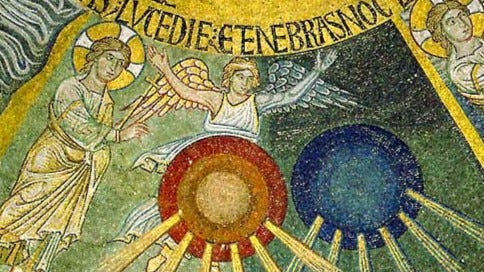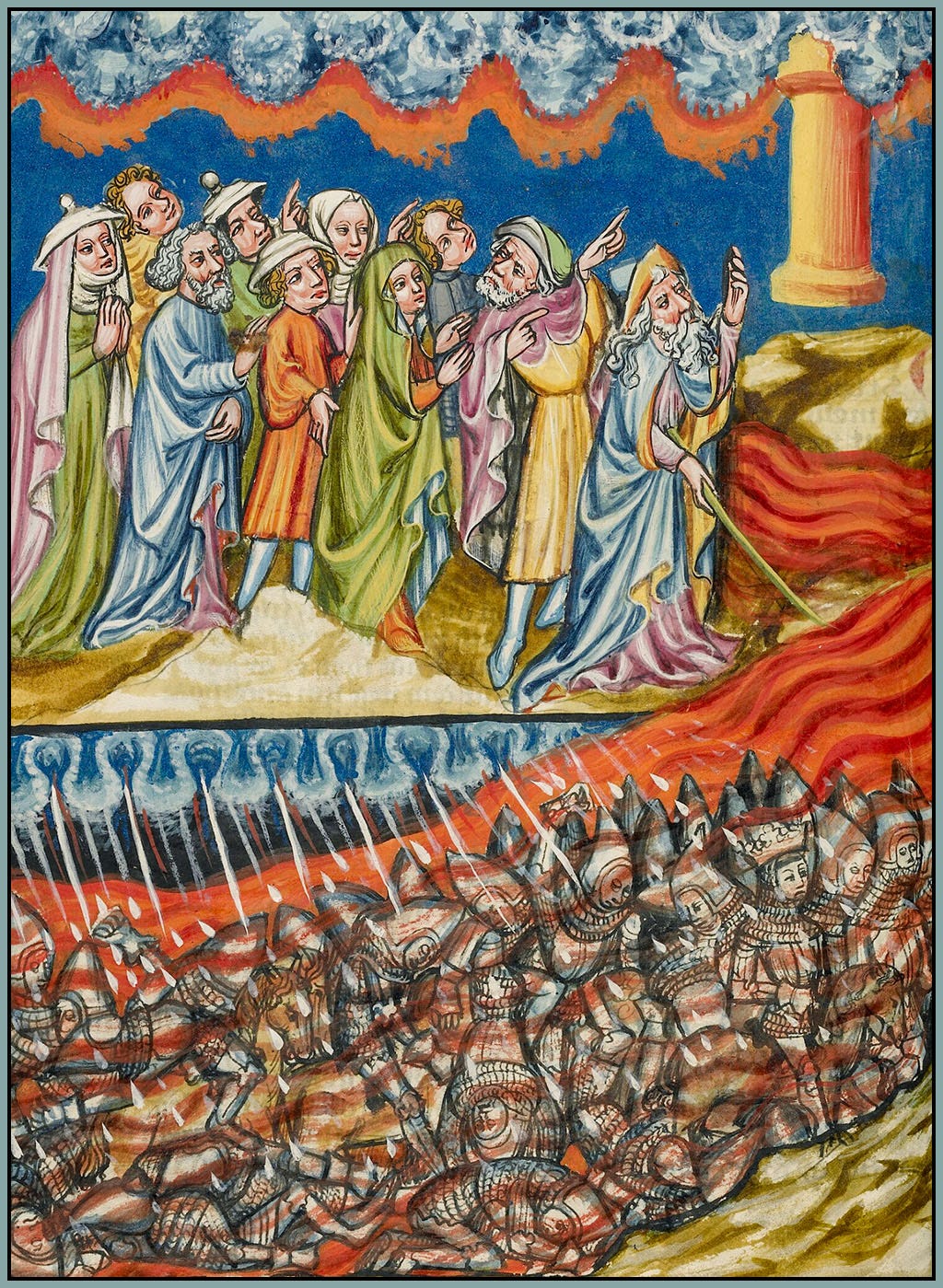The Via Mediaevalis series on medieval angelology continues. I hope that you can find time to read some of the previous essays on this topic, if you haven’t already:
We ended last Tuesday by reflecting on the immense and multifaceted importance of Sacred Scripture in the lives of medieval Christians: The Bible was
the primary source for understanding not just their religion, but their entire world. To experience the Bible in that way is to experience it as literature—as divine literature that conveys truth through literal, allegorical, moral, and anagogical senses, as all-encompassing literature whose poems, proverbs, love stories, betrayals, journeys, battles, tragedies, conquests, heroes, villains, sermons, parables, prophesies, and visions speak of everything that happens on earth and in heaven, explore all the great questions of individual and social existence, descend into the depths of the human psyche, and reach up to the heights of the Most High God.
The multiple “senses” or interpretive “levels” of Scripture can be understood as distinct categories of meaning that are present in the inspired words of biblical texts. The senses have been theorized in different ways. The fourfold model mentioned above was favored by Thomas Aquinas. Origen spoke of three levels: the literal, the moral, and the spiritual. Dante saw two fundamental categories of meaning in Scripture, one literal and one symbolic, though the symbolic category includes the three non-literal senses of the Thomistic model. The example he provided in a letter to Cangrande della Scala serves as a memorable explanation of the theory: commenting on the exodus of the Hebrew people from the land of Egypt, he says that we can read according to the letter (“the departure of the children of Israel from Egypt in the time of Moses”), the allegory (“our redemption wrought by Christ”), the morality (“the conversion of the soul from the grief and misery of sin to the state of grace”), or the anagogy (“the departure of the holy soul from the slavery of this corruption to the liberty of eternal glory”).
Thus, Scripture communicates to the reader on as many as four levels: a passage can speak literally or historically of real events; allegorically of Christ or His Church on earth; morally of the duties and virtues involved in Christian life; and anagogically of heavenly realities.
It is not uncommon to come across the multiple senses of Scripture in discussions of traditional exegesis. It is uncommon, though, to see this scriptural mentality fully integrated into the “big picture” of medieval life. To read the Bible this way is a scholarly activity, yes—it requires attention to detail, awareness of context, theological proficiency, perhaps even expertise in the original languages. But it is also a highly imaginative activity, and one in which the biblical texts are experienced and appreciated in a highly literary way. To discover and explore all this figurative eloquence and all these resonant textual relationships, one must know the Bible with a special type of knowledge that Dr. James Taylor—whom I knew personally, may he rest in peace—called poetic knowledge:
Whatever poetic knowledge is, it is not strictly speaking a knowledge of poems, but a spontaneous act of the external and internal senses with the intellect, integrated and whole, rather than an act associated with the powers of analytic reasoning…. It is, we might say, knowledge from the inside out.1
Medieval Christians entered into the Bible, and dwelt there. Accustomed to traveling by foot, they were content to move slowly—from scene to scene, from verse to verse, from word to word. In their journeys through the Book of Scripture, they found that which was clearly present; they saw also that which was hidden; they noticed even that which was absent. And they kept these things, pondering them in their hearts. When the day was far spent, and the tolling of the bell or the lowing of the cows called them back to the Book of Nature, they looked out from within the literary world of the Bible and saw their material world as through a lens—the lens, that is, of divine Story.
Keep reading with a 7-day free trial
Subscribe to Via Mediaevalis to keep reading this post and get 7 days of free access to the full post archives.





